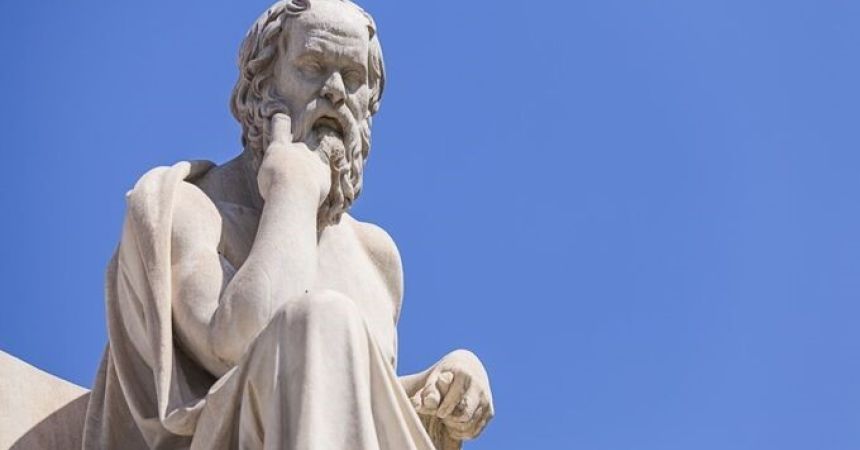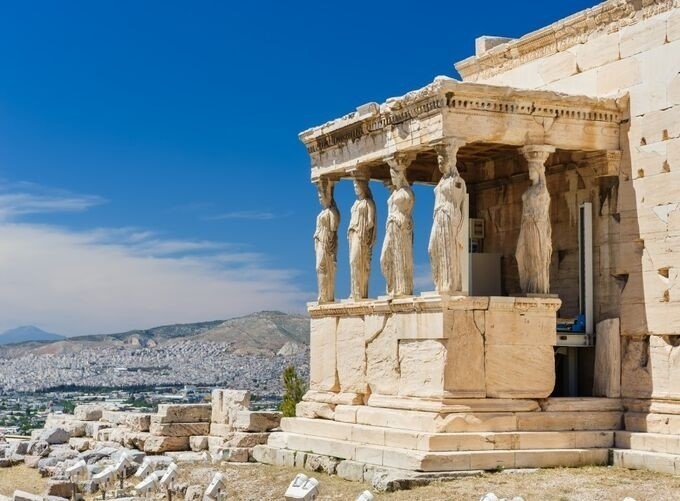
Greek Art and Architecture | History & Influence
Greek art and architecture have left an indelible mark on the history of human civilization. From the grandeur of ancient temples to the delicate beauty of pottery, the artistic and architectural achievements of Greece have influenced countless cultures and continue to inspire admiration today. This blog explores the rich history, key characteristics, and enduring legacy of Greek art and architecture.
Historical Overview of Art and Architecture
The Geometric Period (900-700 BCE)
The Geometric Period marked the beginning of a distinct Greek artistic style. Characterized by geometric patterns and motifs, this era saw the emergence of large, decorated vases used in burial practices. Figures and scenes began to appear, albeit in a stylized and abstract manner.
The Archaic Period (700-480 BCE)
The Archaic Period witnessed significant advancements in Trip to Greek art and architecture. The period is known for the development of the kouros (male) and kore (female) statues, which showcased more naturalistic and idealized human forms. In architecture, the period saw the construction of the first large stone temples, including the Temple of Hera at Samos.
The Classical Period (480-323 BCE)
The Classical Period is often considered the pinnacle of Greek art and architecture. Marked by a focus on proportion, balance, and harmony, this era produced some of Greece’s most iconic works. The Parthenon in Athens, dedicated to the goddess Athena, exemplifies the architectural achievements of this period. In sculpture, artists like Phidias and Polykleitos created works that emphasized idealized beauty and anatomical precision.
The Hellenistic Period (323-31 BCE)
Following the conquests of Alexander the Great, the Hellenistic Period saw Greek culture spread across a vast territory. Art and architecture became more diverse and expressive, reflecting the influences of various cultures. The period is known for its dramatic and dynamic sculptures, such as the Laocoön Group, and monumental architecture, like the Great Altar of Pergamon.
Key Characteristics of Greek Art
Sculpture
Greek sculpture evolved significantly over the centuries. Early works were rigid and stylized, but as time progressed, artists achieved greater naturalism and realism. Key characteristics of Greek sculpture include:
- Idealized Human Forms: Greek sculptors sought to depict the human body in its idealized form, emphasizing symmetry, proportion, and beauty.
- Contrapposto: This technique, developed during the Classical Period, involves a slight shift in weight to create a more naturalistic pose.
- Emotion and Movement: Hellenistic sculptures are particularly noted for their dynamic poses and expressive faces, conveying a sense of movement and emotion.
Pottery
Greek pottery is renowned for its intricate designs and functional forms. There are several distinct styles, including:
- Geometric Pottery: Characterized by geometric patterns and abstract figures.
- Black-Figure Pottery: Developed in the Archaic Period, this style features black silhouettes against a red background, with details incised to reveal the red clay beneath.
- Red-Figure Pottery: Emerging later, this technique reversed the color scheme, allowing for more detailed and naturalistic depictions of figures.
Painting
While few examples of Greek painting have survived, we know from literary sources and Roman copies that Greek painters excelled in various genres, including:
- Frescoes: Large-scale wall paintings depicting mythological and everyday scenes.
- Panel Paintings: Portable works on wooden panels, often used in domestic and religious contexts.
Key Characteristics of Greek Architecture
Temples
Visit Greek temples are among the most iconic examples of ancient architecture. Key features include:
- Doric, Ionic, and Corinthian Orders: These architectural styles, or orders, are distinguished by their column designs and proportions. The Doric order is the simplest, with sturdy columns and plain capitals. The Ionic order features more slender columns with scroll-like capitals. The Corinthian order is the most ornate, with elaborate capitals adorned with acanthus leaves.
- Entablature: The horizontal structure supported by columns, consisting of the architrave, frieze, and cornice.
- Pediment: The triangular space at the end of a temple, often decorated with sculptural reliefs.
Public Buildings
Beyond temples, Greek architects also designed a variety of public buildings, including:
- Theatres: Open-air structures used for dramatic performances, featuring a semi-circular orchestra and tiered seating.
- Stoas: Covered walkways or porticos, used as marketplaces or gathering spaces.
- Agoras: Public squares that served as the heart of civic life in Greek cities.

Residential Architecture
Greek houses varied widely, but common features included:
- Courtyards: Central open spaces around which rooms were arranged.
- Androns and Gynaikeions: Separate areas for men and women, reflecting the social norms of the time.
Notable Examples of Greek Art and Architecture
The Parthenon
Located on the Acropolis of Athens, the Parthenon is a masterpiece of Classical architecture. Designed by architects Ictinus and Callicrates, with sculptures by Phidias, the temple exemplifies the Doric order. Its proportions and decorative elements, including the frieze and metopes, reflect the Greek pursuit of harmony and balance.
The Temple of Apollo at Delphi
The Temple of Apollo at Delphi, home to the famous oracle, is another significant example of Greek architecture. Its Doric columns and intricate carvings reflect the religious and cultural importance of the site.
The Laocoön Group
This Hellenistic sculpture, depicting the Trojan priest Laocoön and his sons being attacked by sea serpents, is renowned for its dramatic composition and emotional intensity. The work exemplifies the Hellenistic focus on movement and expression.
The Venus de Milo
This statue of Aphrodite, discovered on the island of Melos, is one of the most famous examples of Greek sculpture. The work’s elegant proportions and serene expression reflect the Classical ideals of beauty.
The Erechtheion
Also located on the Acropolis, the Erechtheion is known for its unique design and the famous Caryatids – sculpted female figures that serve as columns. The temple’s asymmetrical layout reflects its complex religious functions.
The Legacy of Greek Art and Architecture
Greek art and architecture have had a profound and lasting influence on subsequent cultures and artistic movements. During the Roman Empire, Greek styles were adopted and adapted, leading to the spread of classical aesthetics across Europe. The Renaissance saw a revival of interest in Greek art, as artists and architects sought to emulate the harmony and balance of classical works.
Neoclassicism
In the 18th and 19th centuries, the Neoclassical movement drew heavily on Greek architectural principles. Buildings like the British Museum in London and the United States Capitol in Washington, D.C., reflect the enduring appeal of Greek styles.
Modern Influence
Greek art and architecture continue to inspire contemporary artists and architects. The emphasis on proportion, simplicity, and naturalism remains relevant in modern design. Museums around the world, such as the Louvre in Paris and the Metropolitan Museum of Art in New York, house extensive collections of Greek art, ensuring that these ancient masterpieces remain accessible to the public.
Cultural Identity
For modern Greece, the legacy of its ancient art and architecture is a vital part of national identity. Sites like the Acropolis and museums such as the National Archaeological Museum in Athens attract millions of visitors each year, highlighting the ongoing fascination with Greece’s cultural heritage.
Indulge in luxury on your Greek holiday.
Greek art and architecture represent a pinnacle of human achievement, characterized by their pursuit of beauty, balance, and expression. From the geometric patterns of early pottery to the majestic temples and dynamic sculptures of the Hellenistic period, Greek artists and architects set standards that continue to inspire and influence. The legacy of Greek art and architecture is a testament to the enduring power of creativity and the timeless quest for excellence. As we admire these ancient works, we not only glimpse the past but also draw inspiration for the future.



